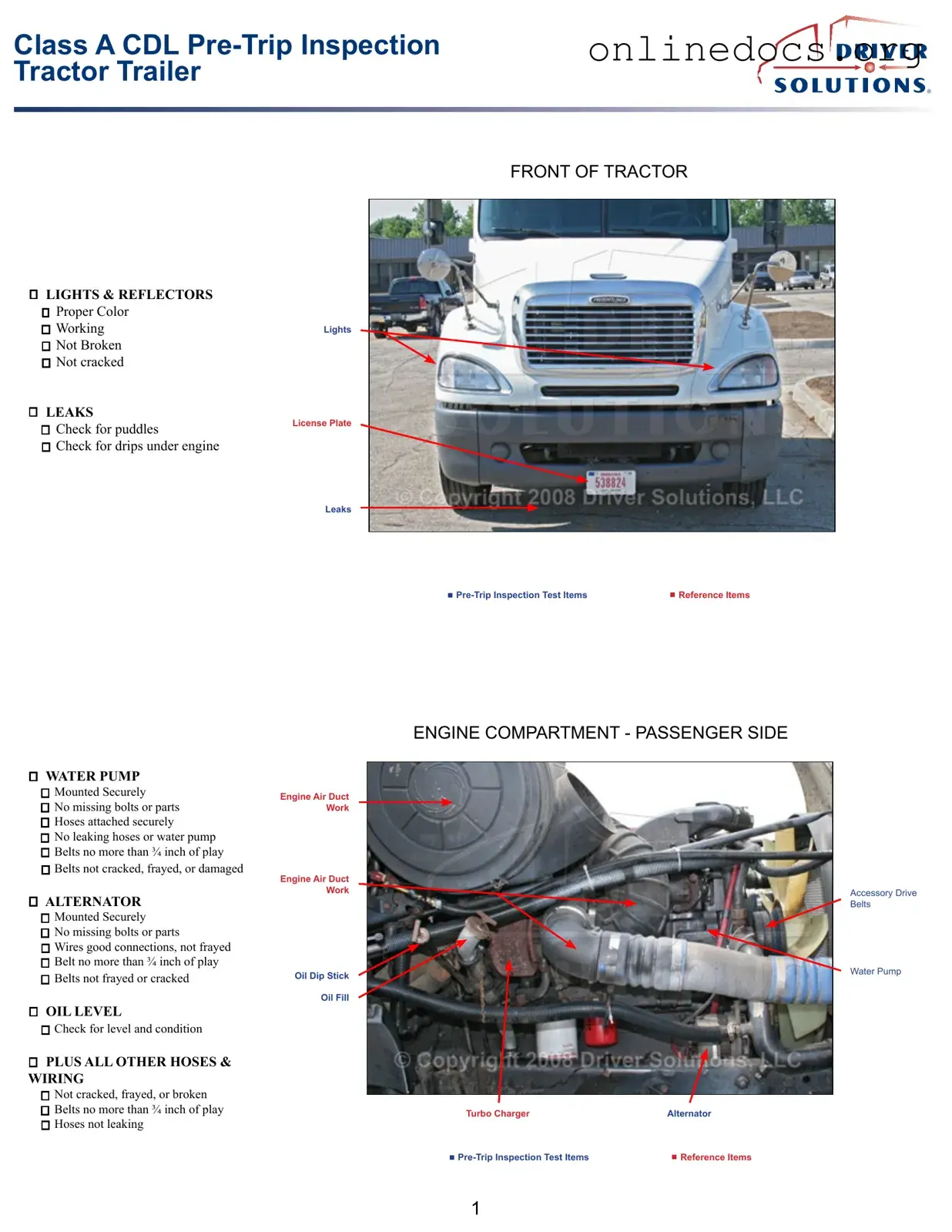The Vehicle Inspection Report is a document that serves a similar purpose to the Pre Trip Inspection Checklist. Both documents are designed to ensure that a vehicle is safe and roadworthy before it is used. The Vehicle Inspection Report typically includes detailed information about the condition of various vehicle components, such as brakes, lights, and tires. This report is often required by regulatory authorities and helps maintain compliance with safety standards, just like the Pre Trip Inspection Checklist.
The Daily Vehicle Inspection Log is another document akin to the Pre Trip Inspection Checklist. This log is used by drivers to record the condition of the vehicle at the start of each day. It usually includes checks for fluid levels, tire pressure, and any visible damages. The Daily Vehicle Inspection Log is crucial for identifying any issues that may arise during operation, ensuring that the vehicle remains safe for use, similar to the proactive approach of the Pre Trip Inspection Checklist.
The Maintenance Record is also comparable to the Pre Trip Inspection Checklist. This document tracks all maintenance activities performed on a vehicle, including oil changes, tire rotations, and brake inspections. While the Pre Trip Inspection Checklist focuses on immediate safety checks, the Maintenance Record provides a historical account of the vehicle's upkeep. Both documents aim to enhance vehicle safety and reliability over time.
In addition to the essential documents mentioned, understanding your rights and responsibilities is crucial when renting a property. The necessary Lease Agreement form provides a framework for both landlords and tenants, ensuring clarity and security in rental agreements. Properly completing this form aids in establishing a mutual understanding, ultimately facilitating a more harmonious rental experience.
The Accident Report Form shares similarities with the Pre Trip Inspection Checklist in that both aim to document conditions that could affect safety. While the Pre Trip Inspection Checklist is proactive, ensuring safety before a trip, the Accident Report Form is reactive, detailing the circumstances and damages after an incident. Both documents are essential for understanding vehicle safety and performance, albeit at different points in time.
The Driver's Daily Log is another document that aligns with the Pre Trip Inspection Checklist. This log is used by drivers to record their hours of service and any relevant information about their trips. While it does not focus solely on vehicle condition, it complements the Pre Trip Inspection Checklist by ensuring that drivers are adhering to regulations regarding rest and operational limits. Together, these documents promote safety and compliance in transportation.
The Safety Audit Checklist is similar to the Pre Trip Inspection Checklist in its focus on safety protocols. This checklist is often used by organizations to evaluate their safety practices and identify areas for improvement. While the Pre Trip Inspection Checklist is specific to vehicle conditions, the Safety Audit Checklist encompasses a broader range of safety issues, including training and compliance. Both documents aim to foster a culture of safety within transportation operations.
Lastly, the Equipment Inspection Checklist serves a similar function to the Pre Trip Inspection Checklist. This document is used to inspect various types of equipment, ensuring they are in good working order before use. Like the Pre Trip Inspection Checklist, it emphasizes the importance of safety and operational efficiency. Both checklists help prevent accidents and ensure that equipment is reliable, whether on the road or at a job site.
